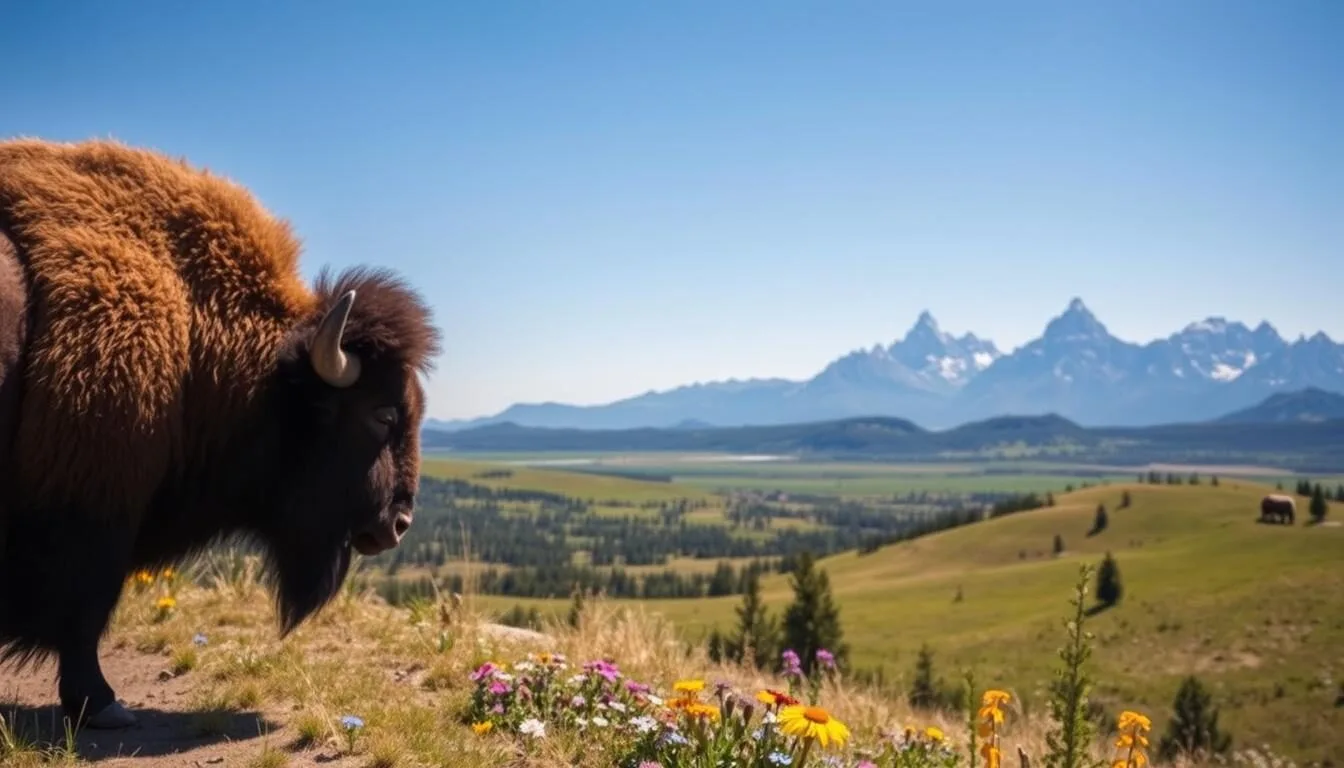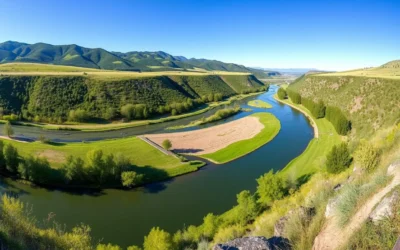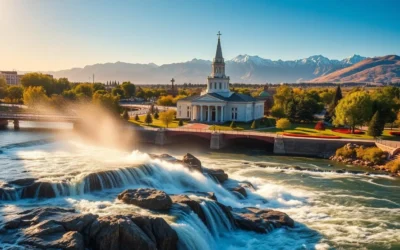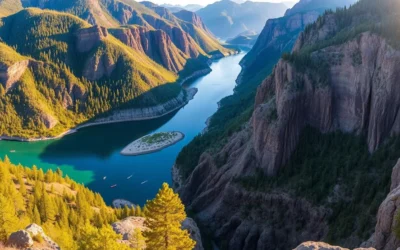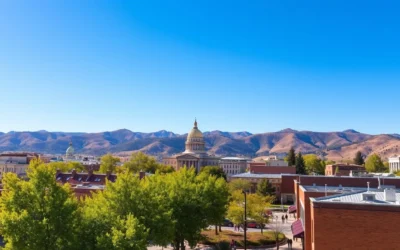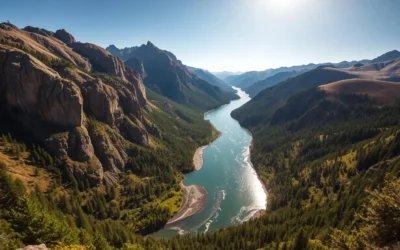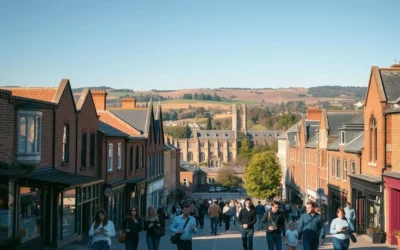Welcome to a world of breathtaking geothermal activity, stunning landscapes, and abundant wildlife. As you plan your visit, you’ll discover why this incredible destination should be on every traveler’s bucket list, boasting rainbow-colored hot springs and erupting geysers that will leave you in awe.
As you explore this comprehensive guide, you’ll uncover the must-see attractions and hidden gems that make this national park so unique. Get ready to experience the iconic features that have captivated visitors for generations, from the majestic Grand Prismatic Spring to the awe-inspiring Old Faithful.
To make the most of your adventure, we’ll provide you with practical tips on planning your visit, including the best time to visit and essential items to pack.
Discovering the Wonders of Yellowstone National Park
Imagine standing in a place where geysers erupt, hot springs shimmer, and wildlife roams free – welcome to Yellowstone National Park, a world-renowned destination that invites you to explore its untamed beauty.
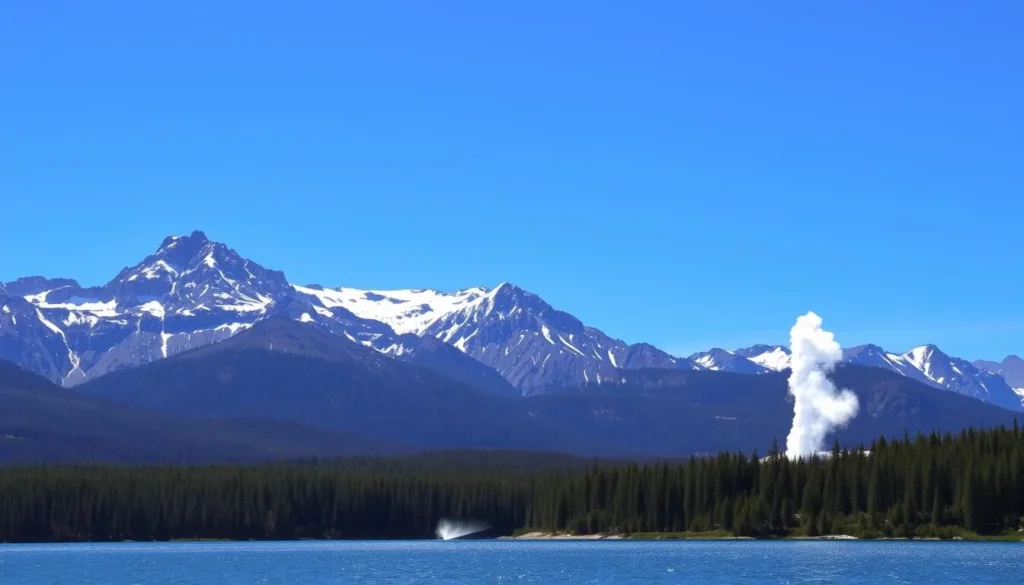
A Brief Introduction to America’s First National Park
Established in 1872, Yellowstone National Park holds the distinction of being America’s first national park and one of the most diverse ecosystems in North America. Spanning over 2.2 million acres across Wyoming, Montana, and Idaho, the park offers a variety of landscapes, from alpine forests to vast valleys.
The park sits atop one of the world’s largest active supervolcanoes, powering its famous geothermal features, including over 10,000 thermal features and more than 500 active geysers. This unique geology makes Yellowstone a fascinating place to explore.
| Feature | Description | Location |
|---|---|---|
| Old Faithful Geyser | A iconic geyser known for its regular eruptions | Upper Geyser Basin |
| Grand Prismatic Spring | The largest hot spring in the United States, known for its vibrant colors | Midway Geyser Basin |
| Mammoth Hot Springs | A complex of hot springs and travertine formations | Mammoth Hot Springs Area |
Why Yellowstone Should Be on Your Bucket List
Visiting Yellowstone National Park offers a unique opportunity to witness natural phenomena that can’t be seen anywhere else in such concentration, making it one best places for nature enthusiasts. The park is home to the largest concentration of mammals in the lower 48 states, including iconic species like bison, elk, wolves, bears, and moose.
The diverse ecosystems, dramatic canyons, alpine rivers, and lush forests create a photographer’s paradise with endless opportunities for capturing breathtaking landscapes. Whether you’re interested in wildlife viewing, hiking, or simply taking in the scenic beauty, Yellowstone has something to offer, making it a must-visit destination for anyone who loves the outdoors and wants to experience the best things that nature has to offer.
Planning Your Yellowstone Adventure
Planning a trip to Yellowstone National Park can be a daunting task, but with the right information, you can make the most of your adventure. With its rich history, diverse wildlife, and breathtaking geothermal features, Yellowstone is a destination that requires careful planning to fully appreciate.
Best Time to Visit Yellowstone
Choosing the best time to visit Yellowstone National Park depends on your preferences and what you want to experience. The park is open year-round, but the conditions and activities vary significantly with the seasons.
- Summer (June-August) offers warm temperatures and access to all park roads and facilities, but it’s also the peak tourist season, with large crowds and higher prices for accommodations.
- Fall (September-October) brings spectacular foliage, fewer visitors, and increased wildlife activity as animals prepare for winter, making it an excellent time for photography and wildlife viewing.
- Spring (April-May) features newborn wildlife and blooming wildflowers, though some roads and facilities may remain closed due to lingering snow.
- Winter (November-March) transforms Yellowstone into a snow-covered wonderland, offering unique opportunities for snowmobiling, cross-country skiing, and viewing steaming geysers against snowy backdrops.
How Many Days to Spend in Yellowstone
To properly experience the diverse regions of Yellowstone National Park, it’s recommended to spend at least 4-5 days exploring the park. This allows you to visit the main attractions without feeling rushed and to enjoy the scenic drives and hiking trails.
Consider staying in multiple locations throughout the park to minimize driving time and maximize your exploration opportunities. Towns like Gardiner and West Yellowstone, just outside the park’s borders, offer convenient lodging options.
Essential Items to Pack for Your Trip
When preparing for your trip to Yellowstone, there are several essential items to include in your packing list. Layers of clothing are crucial due to the dramatic temperature variations, along with comfortable hiking shoes, binoculars for wildlife viewing, sun protection, and a detailed park map.
- Don’t forget to pack a reusable water bottle, snacks for long drives between attractions, a first aid kit, and bear spray if you plan to hike.
- Reservations for lodging inside the park should be made 6-12 months in advance, especially if you’re visiting during the peak summer season.
By being well-prepared, you can focus on enjoying the best things that Yellowstone has to offer, from its geothermal wonders to its abundant wildlife.
Iconic Geothermal Features You Can’t Miss
As you explore Yellowstone, you’ll encounter incredible geothermal attractions that are sure to leave you in awe. The park is home to an array of unique and fascinating features that showcase the Earth’s natural beauty and power.
Old Faithful Geyser: Nature’s Timely Spectacle
Old Faithful remains one of Yellowstone’s most famous attractions, erupting approximately every 90 minutes with remarkable predictability. It shoots water up to 185 feet into the air for 1.5 to 5 minutes, creating a breathtaking spectacle.
For the best viewing experience, arrive 20-30 minutes before the predicted eruption time to secure a good spot. Alternatively, hike to Observation Point for a less crowded overhead view.
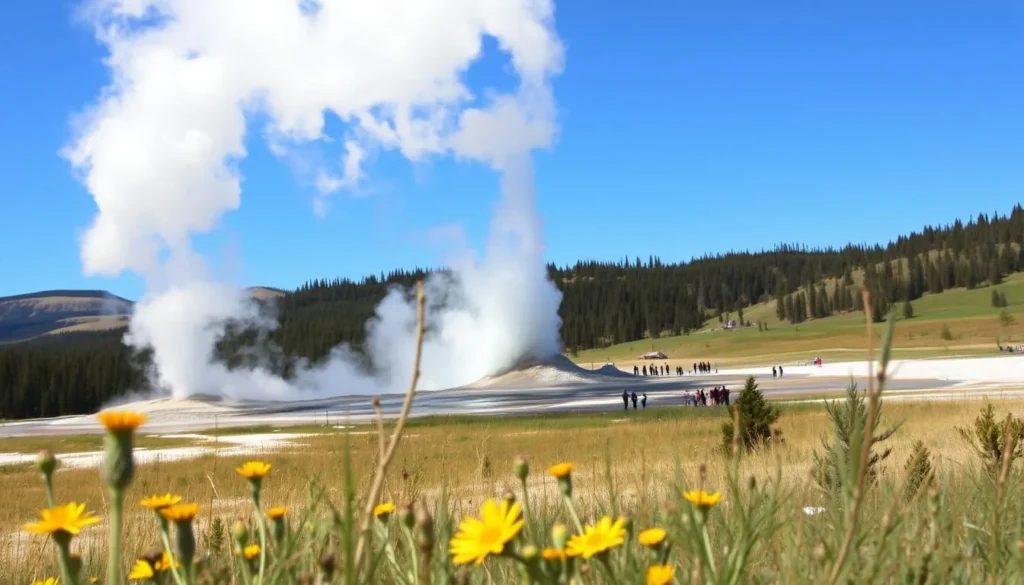
Grand Prismatic Spring: A Rainbow of Natural Colors
The Grand Prismatic Spring is America’s largest hot spring and the third largest in the world, spanning 370 feet in diameter and reaching depths of 160 feet. The vibrant rainbow colors are created by heat-loving bacteria thriving in different temperature zones around the spring’s edges.
Visit the Grand Prismatic Spring during midday when sunlight enhances its colors and the morning steam has lifted for the most spectacular views. The Grand Prismatic Spring Overlook trail offers a bird’s-eye view of this magnificent thermal feature.
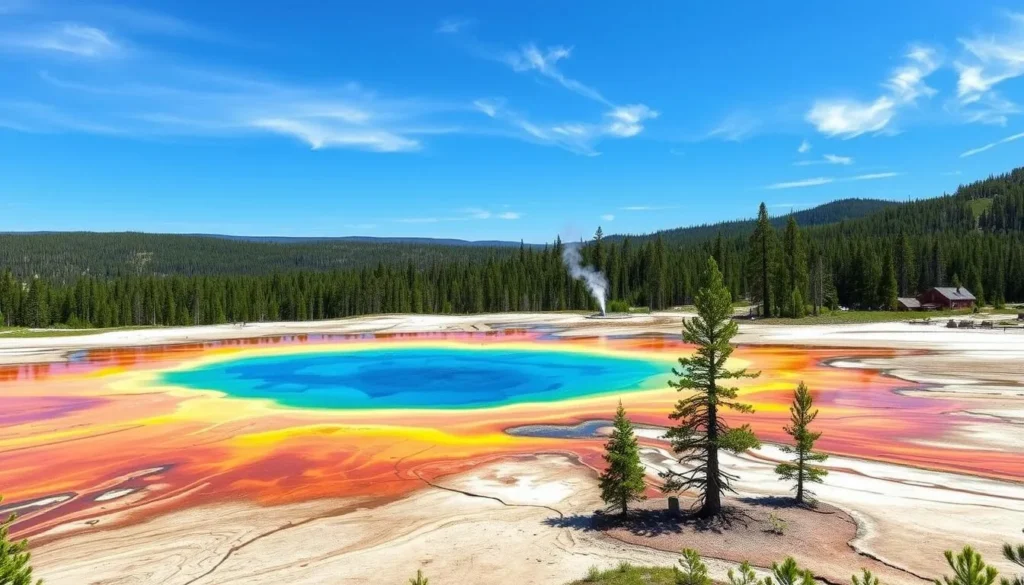
Morning Glory Pool: The Fading Beauty
Morning Glory Pool, once vibrantly colored, has been damaged by tourists throwing coins and debris into its waters, altering its appearance over time. Despite this, it remains a beautiful and iconic geothermal feature worth visiting.
These geothermal wonders are part of the park’s extensive geyser basin system, containing roughly 60% of the world’s geysers and representing the visible surface of the massive Yellowstone supervolcano. The hot springs and geysers throughout Yellowstone provide a glimpse into Earth’s powerful subsurface forces and the unique ecosystems that develop around extreme environments.
Exploring the Upper Geyser Basin
Exploring the Upper Geyser Basin is like stepping into a surreal landscape where geysers and hot springs abound. As you wander through this geothermal wonderland, you’ll be surrounded by the sights and sounds of nature’s raw power.
Castle Geyser and Grotto Geyser
The Upper Geyser Basin is home to numerous impressive geysers, including Castle Geyser and Grotto Geyser. Castle Geyser, one of the oldest formations in the basin, erupts every 10-12 hours, displaying a spectacular show that can last up to 20 minutes, followed by a noisy steam phase. Grotto Geyser, with its unique cave-like formation created by mineral deposits, can erupt for up to 10 hours, making it one of the longest-erupting geysers in the park.
Observation Point Trail for Panoramic Views
For a breathtaking view of the Upper Geyser Basin, hike the Observation Point Trail, a moderate 1.1-mile round-trip trail that takes you to an elevated viewpoint. From here, you can see the entire basin and watch Old Faithful erupt from above. This trail offers a unique perspective on the geothermal features below.
Old Faithful Inn and Its Hidden Treasures
After exploring the geysers, visit the historic Old Faithful Inn, built in 1904. This masterpiece of rustic architecture is the largest log structure in the world, featuring a massive stone fireplace and hand-crafted wooden interior. Be sure to explore its hidden treasures, including the intricate woodwork and cozy nooks.
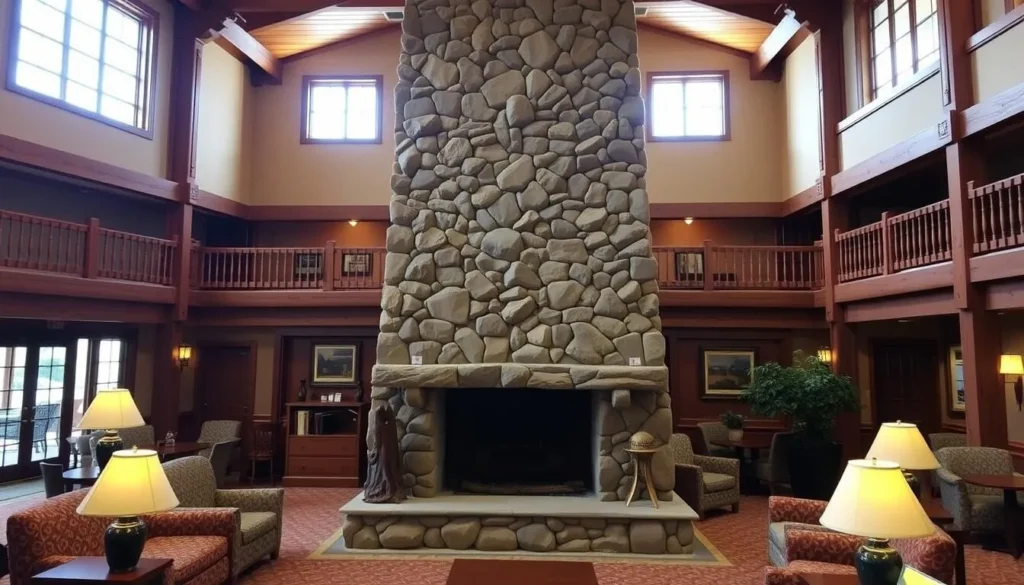
The Upper Geyser Basin is a remarkable area, with over 150 geothermal features packed into one square mile, making it a fascinating place to explore. Don’t miss the Morning Glory Pool, a stunning hot spring named for its resemblance to a morning glory flower, though its colors have faded over time.
To make the most of your visit, check the predicted eruption times at the Old Faithful Visitor Center before exploring the Upper Geyser Basin. The entire Upper Geyser Basin Loop is approximately 4.5 miles and can be explored via wheelchair-accessible boardwalks, making it one of Yellowstone’s most accessible attractions.
The Breathtaking Grand Canyon of Yellowstone
As you explore Yellowstone National Park, one of the most awe-inspiring sights you’ll encounter is the Grand Canyon of the Yellowstone River. This natural wonder stretches for 24 miles, reaches depths of up to 1,200 feet, and displays stunning yellow, orange, and pink hues due to mineral staining and hydrothermal alteration.
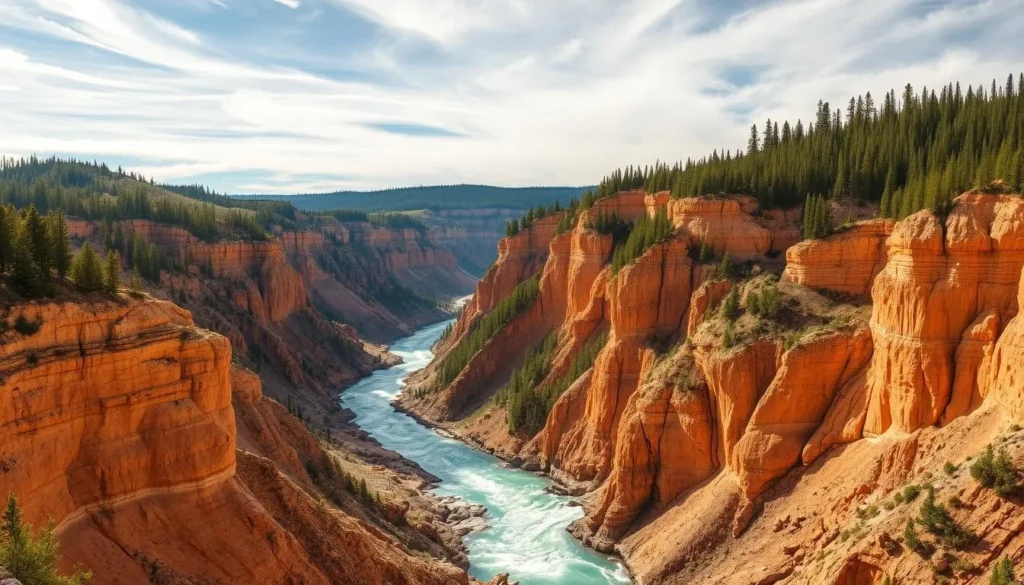
Artist Point: The Most Iconic View
Artist Point on the South Rim offers what many consider the most spectacular view in the national park, with a perfect vista of the 308-foot Lower Falls framed by the colorful canyon walls. This viewpoint is a must-visit for anyone traveling to Yellowstone, providing a breathtaking perspective on the Yellowstone River as it plunges into the depths below.
The experience at Artist Point is enhanced by the surrounding landscape, which is teeming with life. Visitors can enjoy the serene atmosphere and take in the majesty of one of America’s most iconic natural wonders.
North Rim Highlights: Lookout Point and Brink of Lower Falls
The North Rim Drive provides access to several outstanding viewpoints, including Lookout Point, which offers one of the best direct views of the Lower Falls. For those seeking a more adventurous experience, the trail to the Brink of Lower Falls is a steep but rewarding hike that allows visitors to feel the power of the waterfall as it crashes over the edge just feet away from the viewing platform.
| Viewpoint | Description | Accessibility |
|---|---|---|
| Lookout Point | Direct view of Lower Falls | Easy, accessible by car |
| Brink of Lower Falls | Up-close experience of the waterfall | Moderate to Difficult, requires hiking |
South Rim Viewpoints Worth Visiting
The South Rim features the famous Artist Point as well as several other viewpoints that offer different perspectives of the canyon and falls. Early morning visits to the canyon provide the best lighting for photography and significantly smaller crowds, especially at popular spots like Artist Point.
Visitors to the South Rim can enjoy hiking trails that allow them to escape the crowds and discover secluded viewpoints of this magnificent natural feature. The distinctive colors of the canyon come from rhyolite rock that has been chemically altered by hydrothermal activity, creating the yellowish hues that gave the park its name.
Wildlife Viewing Opportunities in Yellowstone
As you explore Yellowstone, you’ll discover that it’s one of the best places in North America for wildlife viewing, with areas like Lamar Valley and Hayden Valley being top destinations. Yellowstone National Park is renowned for its rich biodiversity and abundant wildlife.
Lamar Valley: The Serengeti of North America
Lamar Valley, often called “America’s Serengeti,” is one of the premier wildlife viewing destinations in North America. It’s one of the best places to observe Yellowstone’s diverse animal populations. Early morning and late evening offer the best wildlife viewing opportunities in Lamar Valley, when animals are most active and the golden light creates perfect conditions for photography.
The valley is home to one of the largest free-roaming bison herds in the world, with hundreds or even thousands visible across the expansive grasslands. This remote northeastern corner of Yellowstone National Park also provides the best chance to spot the elusive wolf packs that were successfully reintroduced to Yellowstone in the 1990s.
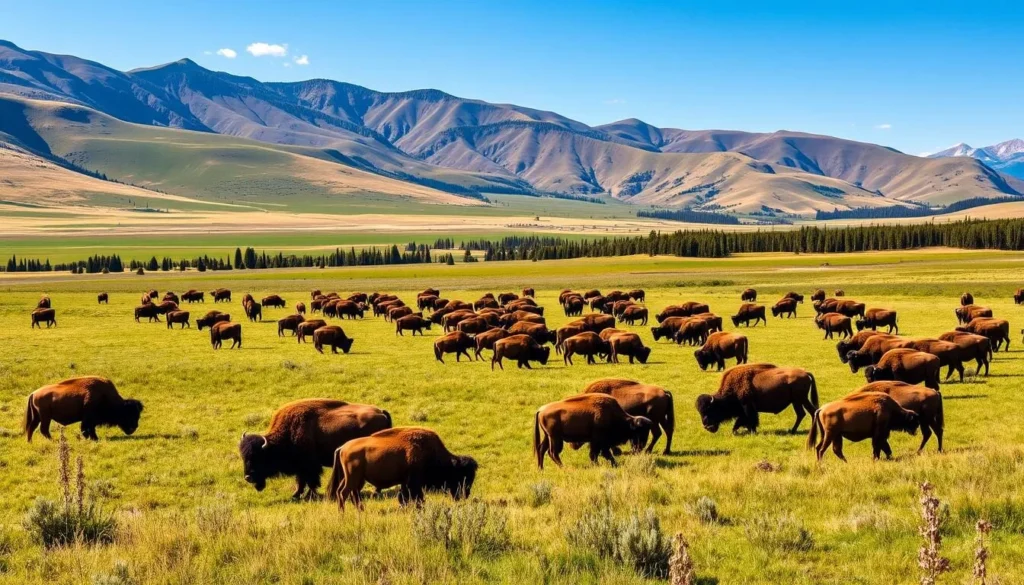
Hayden Valley: Prime Bison Territory
Hayden Valley, more centrally located and accessible than Lamar Valley, offers excellent opportunities to see large herds of bison, along with elk, coyotes, and occasionally grizzly bears. Wildlife “jams” are common in both valleys when animals cross or congregate near the road, potentially causing significant delays that should be factored into your travel plans.
Wildlife Safety Tips and Best Viewing Practices
Always maintain a safe distance from wildlife (100 yards from bears and wolves, 25 yards from all other animals) and use binoculars or spotting scopes for close-up views rather than approaching animals. It’s also crucial to carry bear spray and know how to use it when hiking in Yellowstone’s backcountry, as both grizzly and black bears inhabit the park.
Wildlife viewing in Yellowstone requires patience – dedicated wildlife watchers often spend hours in one location observing animal behavior and interactions. By following these guidelines, you can ensure a safe and enjoyable wildlife viewing experience in Yellowstone National Park.
Must-Do Hikes in Yellowstone National Park
As you explore Yellowstone, you’ll discover a variety of must-do hikes that showcase the park’s natural beauty. From easy day hikes to more challenging climbs, the park offers something for every kind of adventurer. Whether you’re interested in witnessing the majestic Fairy Falls, experiencing the vibrant colors of the Grand Prismatic Spring, or simply enjoying the panoramic views from a mountaintop, Yellowstone’s hiking trails are a great way to experience the park’s diverse landscapes.
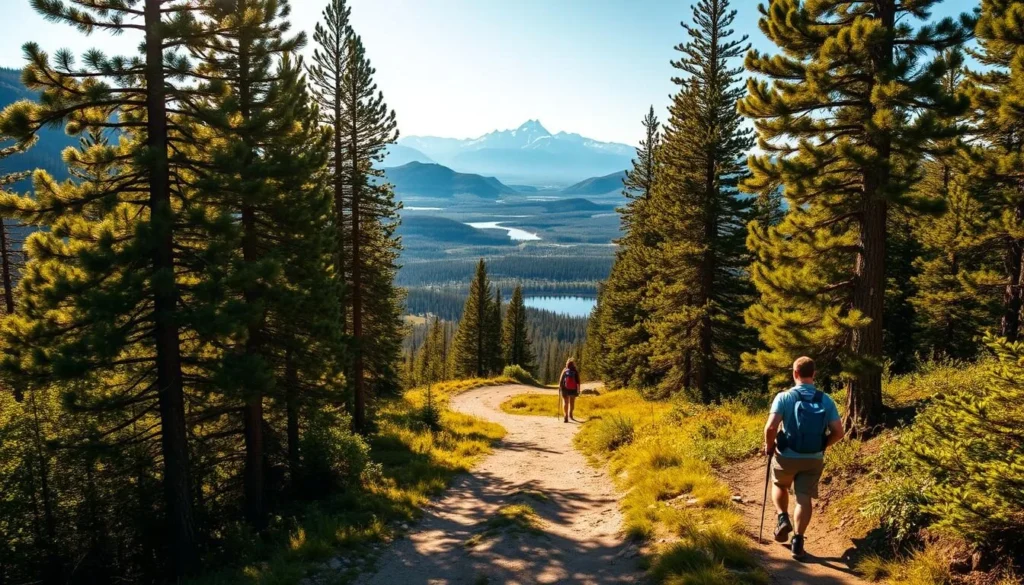
Fairy Falls Trail and Grand Prismatic Overlook
The Fairy Falls Trail is a 5.4-mile round-trip hike that leads to one of Yellowstone’s tallest waterfalls, dropping 197 feet into a scenic basin. This trail can be combined with the Grand Prismatic Overlook Trail, which branches off from the main path and provides an elevated view of the Grand Prismatic Spring, the largest hot spring in the United States. The vibrant colors of the spring, created by the presence of microorganisms and minerals, make for a breathtaking sight.
The combination of these two trails offers a unique hiking experience, with the reward of seeing both a majestic waterfall and one of the park’s most iconic geothermal features. It’s a great option for those looking to experience the best of Yellowstone’s natural beauty in a single hike.
Mount Washburn Trail for Panoramic Views
For those seeking panoramic views, the Mount Washburn Trail is a 6.2-mile round-trip hike from Dunraven Pass to the summit of Mount Washburn. At 10,243 feet, the summit offers 360-degree views of Yellowstone National Park, including the Grand Canyon of Yellowstone and Yellowstone Lake on clear days. This trail is a great option for those looking for a more challenging hike with significant rewards.
Storm Point and Elephant Back Mountain Trails
If you’re looking for easier, family-friendly hikes, consider the Storm Point Trail or the Elephant Back Mountain Trail. The Storm Point Trail is a 2.3-mile round-trip hike along the shores of Yellowstone Lake, offering opportunities to see wildlife such as marmots, ground squirrels, and waterfowl. The Elephant Back Mountain Trail is a 3.8-mile round-trip hike with moderate elevation gain, providing excellent views of the lake and surrounding mountains.
Avalanche Peak: A Challenging Adventure
For experienced hikers, Avalanche Peak offers a challenging 4.7-mile round-trip hike with over 2,100 feet of elevation gain to a summit of 10,566 feet. The views from the top are breathtaking, with a panorama of the eastern Yellowstone wilderness. It’s essential to be prepared for this hike, bringing plenty of water, snacks, and bear spray, as encounters with wildlife are possible.
Regardless of which trail you choose, always remember to carry bear spray and hike in groups of three or more when exploring Yellowstone National Park‘s trails. Most hiking trails are accessible from late May through October, with the best time for hiking typically being July through September when trails are dry and wildflowers are in bloom.
Yellowstone National Park, Idaho: Best Things to Do for Thermal Feature Enthusiasts
Exploring Yellowstone’s thermal features is an unforgettable experience that showcases the park’s unique natural beauty. As you venture into the heart of this geothermal wonderland, you’ll discover a diverse array of captivating thermal areas that are sure to leave you in awe.
Norris Geyser Basin: The Hottest Area in the Park
Norris Geyser Basin stands out as the hottest and most dynamic thermal area in Yellowstone, with temperatures reaching a scorching 459°F (237°C) just 1,087 feet below the surface. This basin is divided into two distinct areas: the Porcelain Basin and the Back Basin. The Porcelain Basin is characterized by its milky-colored landscape and numerous small geysers, creating a surreal landscape that feels otherworldly. In contrast, the Back Basin is more heavily wooded and features larger geothermal features, including the world’s tallest active geyser, Steamboat Geyser, which can erupt over 300 feet high. Although Steamboat’s eruptions are highly unpredictable, the basin’s unique features make it a must-visit for any thermal feature enthusiast.
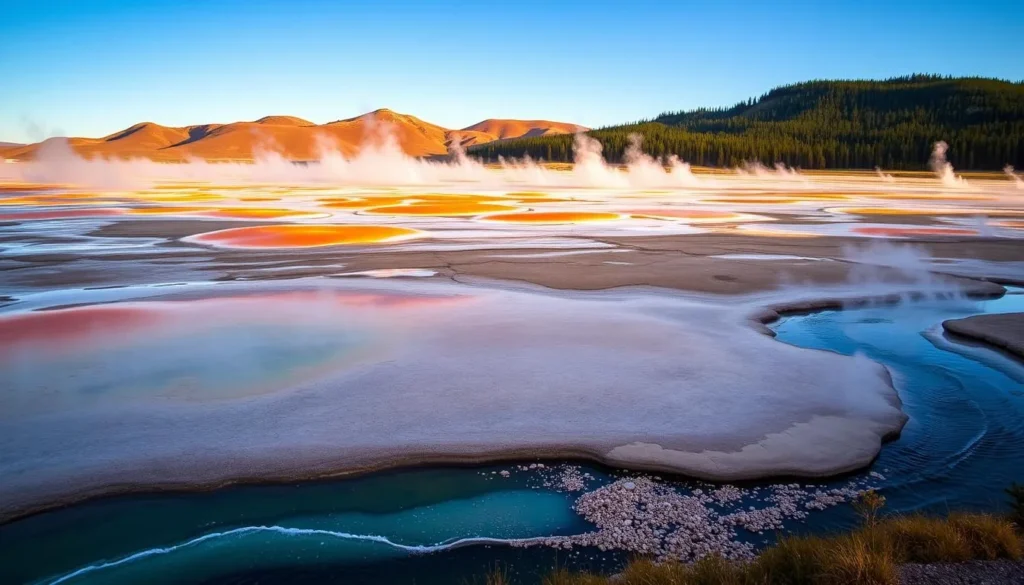
West Thumb Geyser Basin: Where Fire Meets Water
West Thumb Geyser Basin offers a unique setting where geothermal features meet the shore of Yellowstone Lake, creating the unusual phenomenon of lakeside hot springs and underwater geysers. As you explore this area, you’ll encounter several distinctive thermal features, including Fishing Cone, a hot spring where early visitors reportedly caught fish in the lake and cooked them in the same spot. The boardwalks at West Thumb Geyser Basin provide easy access to view colorful pools like the Abyss Pool and Black Pool against the stunning backdrop of Yellowstone Lake and the Absaroka Mountains.
Artist Paintpots and Fountain Paint Pot
For a more serene geothermal experience, visit the Artist Paintpots Trail, a 1-mile loop that showcases a variety of colorful mud pots that bubble and splatter like an artist’s palette. This trail is especially active in spring and early summer, creating an otherworldly landscape that’s a treat for the senses. Another gem is the Fountain Paint Pot, which features four different types of thermal features in one compact area: mud pots, fumaroles, hot springs, and geysers. This makes it an excellent introduction to Yellowstone’s geothermal activity, allowing you to appreciate the diversity of thermal features without the crowds often found at more popular areas.
These less-visited geyser basin areas provide a more peaceful experience, allowing you to fully appreciate the geothermal wonders that Yellowstone has to offer. Whether you’re a seasoned thermal feature enthusiast or just looking to explore the natural beauty of Yellowstone, these areas are sure to captivate and inspire.
Exploring Mammoth Hot Springs Area
As you step into the Mammoth Hot Springs area, you’re immediately struck by the unique geothermal landscape that sets it apart from other areas in Yellowstone. The Mammoth Hot Springs complex is a large collection of hot springs located in the north of the park, featuring travertine terraces that are a result of hot water flowing through limestone and depositing calcium carbonate at the surface.
Terraces and Travertine Formations
The terraces at Mammoth Hot Springs are a living, breathing sculpture garden. The constantly changing formations are a result of minerals being deposited, creating new structures while others become dormant. Features like Minerva Terrace, Palette Spring, and Liberty Cap are examples of this dynamic process. Unlike most hot springs in Yellowstone that form in volcanic rhyolite rock, Mammoth Hot Springs emerges through ancient limestone, creating the distinctive white travertine terraces.
The Upper Terraces Drive offers a scenic route to view additional Mammoth Hot Springs features with less foot traffic than the Main Terrace boardwalks. Exploring the complete boardwalk system is one best things to do for visitors interested in geology, with interpretive signs explaining the unique processes that create these formations.
Historic Fort Yellowstone and the Roosevelt Arch
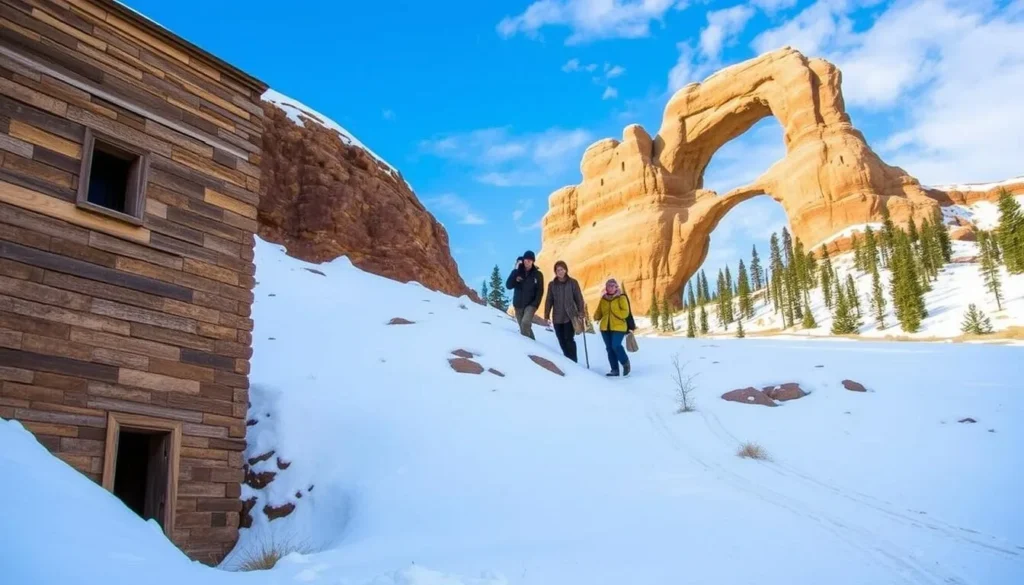
Historic Fort Yellowstone, located in the Mammoth Hot Springs area, served as the U.S. Army headquarters when they administered Yellowstone National Park from 1886 to 1918. Today, it houses park offices and the Albright Visitor Center. The area is also home to a large elk population that often grazes on the lawns around the historic buildings, providing excellent wildlife viewing opportunities.
The iconic Roosevelt Arch at the North Entrance was dedicated in 1903 by President Theodore Roosevelt and bears the inscription “For the benefit and enjoyment of the people,” taken from the 1872 act that established Yellowstone as the world’s first national park. Mammoth Hot Springs is accessible by car year-round, making it a popular winter destination.
Water Activities in Yellowstone
With its numerous lakes, rivers, and hot springs, Yellowstone is a paradise for those who enjoy water activities. The park offers a range of experiences, from boating and fishing on Yellowstone Lake to swimming in the natural hot springs.
Boating and Fishing on Yellowstone Lake
Yellowstone Lake, the largest high-elevation lake in North America, is a must-visit for anyone interested in water activities. At 7,733 feet above sea level, it covers 136 square miles with 110 miles of shoreline and reaches depths of over 400 feet.
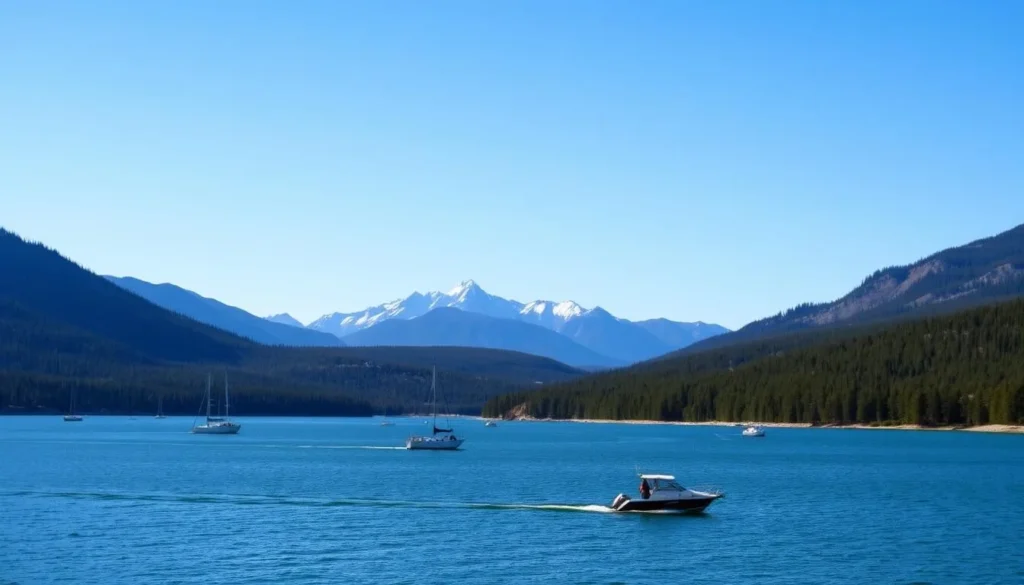
Boating on Yellowstone Lake offers a unique perspective of the park’s landscape, with stunning views of the Absaroka Mountains and opportunities to access remote shorelines and thermal features. For those interested in fishing, Yellowstone Lake is home to native Cutthroat Trout, although invasive Lake Trout have impacted their population.
Hiring a fishing guide is recommended for those serious about fishing in Yellowstone Lake, as they provide expertise on local conditions, regulations, and the best spots for catching various species. Boat rentals are available at Bridge Bay Marina, including motorboats, rowboats, and guided fishing charters.
Swimming at Boiling River Hot Spring
The Boiling River Hot Spring, a popular spot for swimming, is currently closed due to 2022 flood damage. When open, it offers a unique experience where hot spring water mixes with the cold Gardner River to create comfortable soaking temperatures.
Visitors can enjoy swimming at this natural hot spring, which requires a half-mile walk from the parking area. It’s typically accessible from late summer through winter when water levels are safe. Yellowstone Lake is also one best places for kayaking and canoeing, with West Thumb and the northern shores offering protected waters for paddlers.
It’s essential to note that all boats must be permitted and inspected for aquatic invasive species before launching on any waters in Yellowstone National Park, with strict regulations in place to protect the park’s aquatic ecosystems.
Hidden Gems and Lesser-Known Attractions
Beyond the iconic landmarks, Yellowstone National Park holds a treasure trove of hidden gems waiting to be discovered. While the park’s famous attractions draw millions of visitors each year, there are plenty of secret spots and lesser-known areas that offer a more peaceful and intimate experience with nature.
Blacktail Plateau Drive: A Scenic Detour
Take a detour from the main Grand Loop Road and explore the Blacktail Plateau Drive, a 7-mile one-way dirt road that winds through forests and meadows, offering excellent wildlife viewing opportunities. This lightly-trafficked scenic drive is a great alternative to the crowded main roads, and you might even spot some of Yellowstone’s incredible wildlife, including bison, elk, and bears. The drive is suitable for most vehicles, and numerous pullouts provide ample opportunities for photography and wildlife watching.
Trout Lake: A Peaceful Escape
For a serene alpine lake experience, hike to Trout Lake via a short but steep 1.2-mile round-trip trail. The lake is a haven for wildlife, with otters fishing and cutthroat trout spawning in early summer. The surrounding forest provides a peaceful atmosphere, making it an ideal spot for relaxation and nature observation.
The Million Dollar Room and Other Secret Spots
Some of Yellowstone’s hidden gems are tucked away in plain sight. The Million Dollar Room in the Old Faithful Inn is one favorite hidden gem that few visitors know about. This secret room contains original sketches and blueprints of the historic inn and can be visited by requesting the free Hamilton Tour at the front desk. Other secret spots include the Sheepeater Cliff near the Gardner River, which showcases unique columnar basalt formations, and Natural Bridge, a 51-foot rock arch near Bridge Bay, accessible via an easy 2.5-mile round-trip trail.
Additionally, consider visiting Lone Star Geyser, located 3.5 miles from the main road, which erupts approximately every three hours. The geyser can be reached via a peaceful bike ride or hike along an old service road, offering a more serene experience compared to the crowds at Old Faithful. Yellowstone’s Mud Volcano area is another intriguing spot, featuring thermal features like Dragon’s Mouth Spring, where gurgling hot water creates the impression of a breathing dragon inside a cave.
These lesser-known things Yellowstone has to offer provide opportunities to experience the park’s wonders without the crowds that gather at more famous attractions, making Yellowstone one of the most rewarding national parks to explore deeply.
Where to Stay In and Around Yellowstone
From the iconic Old Faithful Inn to secluded campgrounds, Yellowstone National Park provides a variety of lodging options that cater to different preferences. Whether you’re looking for luxury, rustic charm, or an immersive outdoor experience, the park has something for everyone.
Lodging Options Inside the Park
The Old Faithful Inn, built in 1904, is a standout accommodation, offering a once-in-a-lifetime experience with its massive stone fireplace and rustic charm. Staying here places you steps away from the famous geyser and the Upper Geyser Basin.
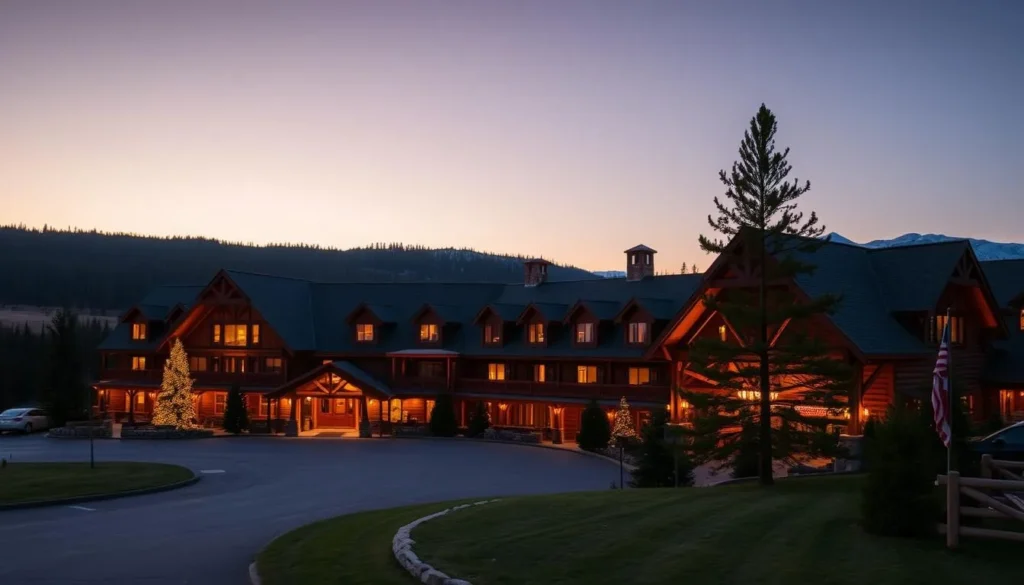
Beyond the faithful inn, other in-park lodging options include the elegant Lake Yellowstone Hotel, the centrally located Canyon Lodge, and the rustic Roosevelt Lodge cabins. Each offers a unique experience, allowing you to choose based on your interests and itinerary.
Camping in Yellowstone: What You Need to Know
Yellowstone National Park offers 12 campgrounds with over 2,000 sites, ranging from developed campgrounds with amenities to more primitive options. Five campgrounds require advance reservations, including Bridge Bay, Canyon, and Madison.
For those seeking a more authentic outdoor experience, the first-come, first-served campgrounds offer a chance to immerse yourself in nature.
Gateway Towns and Accommodations
The gateway towns surrounding Yellowstone National Park provide additional accommodation options. West Yellowstone, Montana, offers the greatest variety of hotels and services, while Gardiner and Cooke City in Montana, and Cody, Wyoming, offer strategic bases for exploring different regions of the park.
Consider splitting your stay between different locations inside or around the park to minimize driving time and maximize your exploration opportunities in this vast wilderness.
Dining and Food Options in Yellowstone
As you explore the wonders of Yellowstone National Park, you’ll discover a diverse range of dining options to satisfy your appetite. From elegant dining rooms to casual cafeterias, the park offers a variety of culinary experiences that cater to different tastes and preferences.
Restaurants and Dining Facilities in the Park
Yellowstone National Park is home to a range of dining facilities operated by Yellowstone National Park Lodges. You can enjoy fine dining at establishments like the Lake Yellowstone Hotel Dining Room, which offers panoramic views of Yellowstone Lake and features locally-sourced ingredients. For a more rustic experience, the Old Faithful Inn Dining Room combines historic ambiance with a diverse menu that includes game meats and sustainable seafood. If you’re looking for quick, affordable meals, the general stores and cafeterias throughout the park provide sandwiches, burgers, and grab-and-go items perfect for picnics or trail lunches.
It’s worth noting that advance reservations are strongly recommended for sit-down restaurants, especially during peak summer season when dining facilities can fill up quickly. Additionally, packing snacks and water is essential when exploring the park, as dining facilities can be 30-60 minutes apart by car.
Local Specialties to Try
When dining in Yellowstone, be sure to try some of the local specialties that make the park’s culinary scene unique. One favorite treat is huckleberry ice cream from Wilcoxson’s, a Montana staple since 1912. You can also sample bison burgers and steaks, which offer a taste of the local wildlife in a sustainable way. Montana trout is another local favorite that appears on many menus throughout the park, reflecting the region’s excellent fishing opportunities. For one best immersive dining experiences, consider the Roosevelt Old West Dinner Cookout, where you can enjoy a cowboy-style steak dinner under the stars after riding horseback or taking a wagon to a secluded location.
As you enjoy the things Yellowstone has to offer, from its geothermal features to its wildlife viewing opportunities, don’t miss the chance to savor the flavors of the region. Whether you’re dining at Yellowstone National Park‘s finest restaurants or grabbing a quick bite, your culinary adventure is sure to be one favorite memory of your trip.
Seasonal Activities and Events
From the warmth of summer to the serenity of winter, Yellowstone transforms with each season, providing a unique adventure every time you visit. The park offers a diverse range of experiences, making it a fascinating destination to explore throughout the year.
Summer Activities: Peak Season Adventures
Summer is peak season in Yellowstone National Park, offering access to all roads, facilities, and trails, with long daylight hours perfect for maximizing exploration time. You can enjoy ranger-led programs, wildlife watching, hiking, fishing, boating, and photography. However, be prepared for afternoon thunderstorms and larger crowds.
Fall in Yellowstone: Colors and Wildlife
Fall transforms Yellowstone with golden aspens and cottonwoods, bugling elk during the rut season, and significantly fewer crowds, making it one of the best times for wildlife photography. The comfortable daytime temperatures and crisp mornings make it ideal for exploring the park.
Winter Wonders: Snowmobiling and Cross-Country Skiing
Winter reveals a completely different side of Yellowstone National Park, with snow-covered landscapes, steaming geysers against white backgrounds, and excellent opportunities to spot wolves and other wildlife. You can enjoy snowmobiling, cross-country skiing, and snowshoeing, with groomed trails available around Old Faithful, Canyon, Tower, and Mammoth Hot Springs areas.
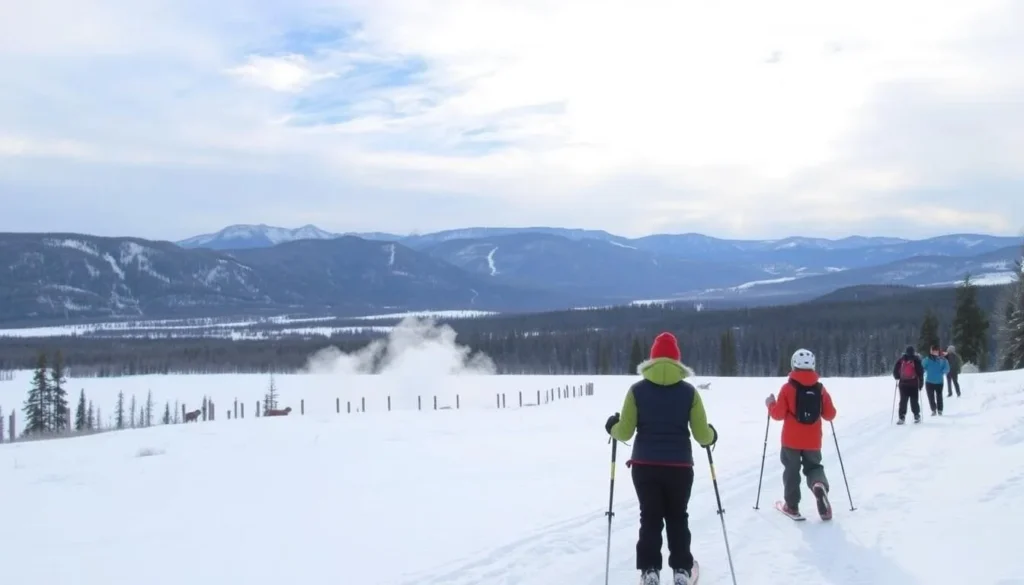
Experiencing Yellowstone across different seasons is one of the best things about the park, as each visit offers entirely new perspectives on this dynamic ecosystem and the things Yellowstone has to showcase. Whether you’re watching the sunrise over the Grand Prismatic Spring or exploring the snow-covered landscapes, Yellowstone is a destination that has something for everyone.
Practical Tips for an Unforgettable Yellowstone Experience
To make the most of your visit to Yellowstone, consider these practical tips that will enhance your overall experience. Yellowstone National Park is a vast and incredible destination, spanning over 2.2 million acres. With so much to see and do, it’s essential to be prepared.
Navigating the Park: Maps and Transportation
Navigating Yellowstone can be challenging due to its vast size and limited cell service. To avoid getting lost, it’s crucial to plan ahead. Download offline maps on Google Maps before your arrival, as this will help you navigate the park even without cell service. The Grand Loop Road forms a figure-eight through the park, covering 142 miles and connecting most major attractions. Make sure to check the official park map for estimated driving times between locations.
When visiting popular attractions like Old Faithful, Grand Prismatic Spring, and Canyon, be prepared for large crowds and limited parking. The parking lot at Grand Prismatic Spring, for example, is ridiculously small for the number of visitors it receives. If you arrive between 9 am and 6 pm, you might find it challenging to secure a parking spot. Consider parking in one of the large turnouts on the park road near Midway Geyser Basin if the parking lot is full.
Avoiding Crowds at Popular Attractions
To avoid the crowds at popular attractions, plan your day strategically. Arrive at places like Old Faithful, Grand Prismatic Spring, and Canyon before 9 AM or after 4 PM to avoid the most crowded times. You may also consider using the park’s shuttle service where available or visiting less popular areas during midday hours. When visiting geyser basins, check eruption predictions at visitor centers and plan your day around seeing predictable geysers like Old Faithful, Castle, Grand, and Daisy.
- Plan your day around the schedules of popular geysers.
- Use the park’s shuttle service to avoid parking hassles.
- Visit less popular areas during peak hours.
Photography Tips for Capturing Yellowstone’s Beauty
Yellowstone offers endless opportunities for stunning photography. For wildlife photography, bring a telephoto lens (at least 300mm) and use a tripod for stability. Focus on the golden hours of early morning and late afternoon when animals are most active and lighting is optimal. When photographing thermal features in geyser basins, a polarizing filter can help reduce glare and enhance the vibrant colors of hot springs and pools.
Use Google Maps to mark locations where you spot wildlife or scenic vistas, allowing you to return at better times for photography or share locations with other travelers. With these tips, you’ll be well on your way to capturing the best things about Yellowstone National Park.
Conclusion
Yellowstone National Park is more than just a destination; it’s an immersive experience that connects you with nature’s splendor. As America’s first national park, Yellowstone continues to captivate visitors with its unique blend of natural beauty and rich history.
The best things Yellowstone has to offer are its geothermal wonders, including the predictable eruptions of Old Faithful and the vibrant colors of Grand Prismatic Spring. These natural attractions showcase the planet’s geothermal features in their most dramatic forms, making Yellowstone National Park a must-visit destination.
The diverse ecosystems within Yellowstone support an incredible array of wildlife, providing visitors with unparalleled opportunities to observe animals in their natural habitat. From the majestic elk to the grizzly bears, the park is a wildlife enthusiast’s paradise. Whether you’re drawn to the dramatic landscapes, the unique geothermal features, or the abundant wildlife, Yellowstone offers something magical for every type of traveler.
One of the challenges of visiting Yellowstone National Park is that its vast size and variety of attractions make it impossible to see everything in a single visit. This encourages return trips to explore new areas and revisit favorites in different seasons. The changing seasons transform Yellowstone throughout the year, with each offering a completely different experience and perspective on this dynamic ecosystem.
As you plan your visit to this remarkable national park, remember that the true magic of Yellowstone lies not just in checking off a list of attractions, but in taking time to connect with the natural world in all its wild beauty. One best examples of conservation success in America, Yellowstone demonstrates how protecting natural spaces benefits both the environment and human enjoyment.
To ensure that things Yellowstone National Park protects remain pristine, responsible tourism practices are vital. Staying on boardwalks, maintaining safe distances from wildlife, and leaving no trace are essential practices for preserving the park for future generations. By adopting these practices, you contribute to the conservation of this incredible natural wonder.
In conclusion, Yellowstone National Park is a destination that offers unforgettable experiences. With its rich history, diverse wildlife, and breathtaking geothermal features, it’s a place that will leave you in awe. As you plan your trip, remember to take your time, be mindful of your impact, and cherish the moments that make Yellowstone so special.
